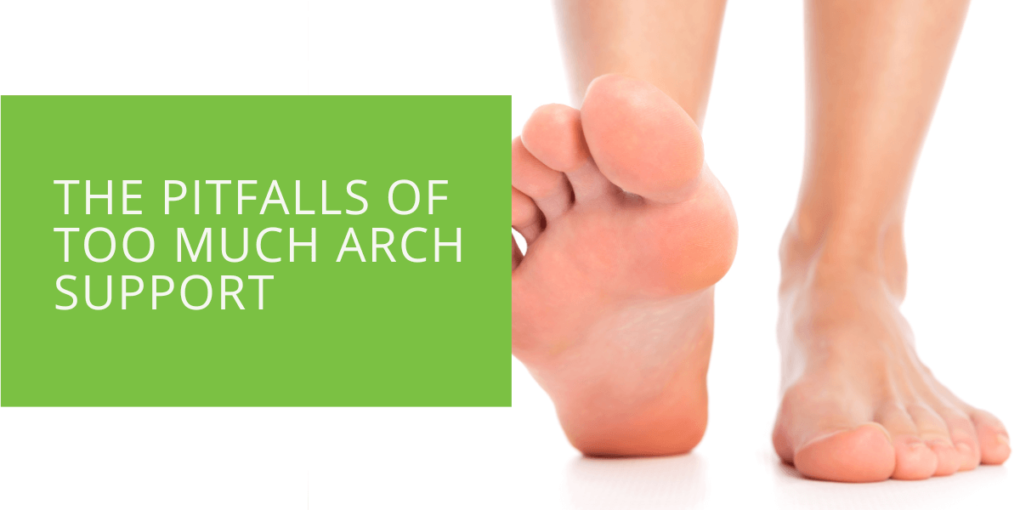The Pitfalls of Too Much Arch Support
Arch support plays a crucial role in maintaining foot health and providing relief from various foot conditions. It is commonly believed that more arch support is always better. However, this article will explore the potential pitfalls of excessive arch support, shedding light on the importance of finding the right balance. Understanding these pitfalls is vital for individuals suffering from foot pain, plantar fasciitis, high arches, and flat feet and seeking effective solutions to alleviate discomfort.
Understanding Arch Support
Arch support is vital to foot health, promoting proper foot biomechanics and relieving foot pain. It involves providing additional structural assistance to the arch, distributing pressure evenly, and improving stability. However, it's important to recognize that arch support is not a one-size-fits-all solution. Each person's feet are unique, and the level and type of arch support needed may vary. Consulting with a podiatrist or foot specialist can help determine the appropriate level of support based on individual foot structure, conditions, and discomfort.
While arch support can alleviate foot pain and improve stability, it should not be relied upon excessively. Over time, excessive reliance on arch support can weaken foot muscles and increase the risk of injuries. It's important to strike a balance by gradually reducing dependence on external support and focusing on strengthening foot muscles through exercises and stretches. Transitioning to more supportive footwear that allows for natural foot movement and flexibility is also beneficial.

Potential Negative Effects of Excessive Arch Support
Weakening of Foot Muscles
Excessive arch support can inadvertently weaken the muscles in the feet. When the foot becomes dependent on external support, the intrinsic foot muscles responsible for maintaining the natural arch can weaken over time. This muscle weakness may result in diminished arch strength and contribute to a higher risk of injury, including plantar fasciitis, Achilles tendonitis, and general foot instability.
Altered Gait and Biomechanics
Excessive arch support can significantly impact an individual's gait pattern and overall foot biomechanics. When the foot is constantly supported in an artificially elevated position, it can lead to an altered walking or running gait. This alteration may create imbalances in the feet and ankles, potentially causing overuse injuries and joint stress. Maintaining a natural gait is crucial for optimal foot function and long-term health.
Lack of Adaptability and Flexibility
The human foot is designed to be adaptable and flexible, allowing it to adjust to various surfaces and absorb shock efficiently. Excessive arch support restricts the foot's natural movement, limiting its ability to adapt and flex appropriately. This lack of adaptability can lead to reduced shock absorption capabilities, compromised balance, and restricted overall foot mechanics. In the long run, it may increase the risk of foot-related discomfort and injuries.
Potential Discomfort and Irritation
Contrary to popular belief, excessive arch support does not necessarily equate to greater comfort. The excessive pressure from rigid arch supports or ill-fitting inserts can create uncomfortable pressure points on the foot. These pressure points may contribute to developing blisters, calluses, and other skin irritations. It is essential to balance providing support and maintaining comfort to avoid unnecessary foot discomfort.

Finding the Right Balance
Finding the right balance in arch support is crucial for maintaining foot health and preventing the pitfalls of excessive reliance on external support. Here are key considerations for achieving optimal arch support while maintaining foot strength and mobility.
Firstly, seek professional assessment and guidance from a podiatrist or foot specialist. They can thoroughly evaluate your foot biomechanics and recommend personalized arch support solutions such as custom orthotics or well-designed insoles.
Secondly, gradually transition to using arch support while focusing on strengthening your foot muscles. Perform foot-strengthening exercises to improve the strength and stability of the intrinsic foot muscles that support the arch.
Select proper footwear that provides adequate arch support without being overly rigid. Choose shoes with cushioning, shock absorption, and a wide toe box to promote comfort, proper alignment, and natural toe splay.
Regular monitoring, adjustments, and ongoing communication with a podiatrist will ensure that you maintain the right arch support balance based on your foot needs. Following these strategies can promote foot health, reduce discomfort, and enhance overall foot function. Remember, achieving the optimal balance may require experimentation, but with persistence and professional guidance, you can find the right balance for your feet.
Conclusion
Understanding the potential pitfalls of excessive arch support is paramount for individuals seeking long-term foot health and pain relief. While arch support plays a vital role in alleviating foot conditions, it is essential not to rely solely on external support. Finding the right balance between support and foot muscle strength is key to maintaining optimal foot function and reducing the risk of foot-related injuries.
Suppose you are experiencing foot arch pain or plantar fasciitis or have concerns about arch support. In that case, consulting with a podiatrist who can provide personalized guidance based on your specific needs is recommended. Remember, every foot is unique, and a tailored approach to foot care is crucial for optimal results. By prioritizing a balanced approach to arch support, you can mitigate the potential pitfalls of excessive arch support.
While arch support is essential for foot health, excessive reliance on it can have detrimental effects. Weakening of foot muscles, altered gait, and biomechanics, reduced adaptability and flexibility, and potential discomfort and irritation are all pitfalls to be mindful of. To avoid these issues, it is crucial to seek professional guidance from a podiatrist or foot specialist who can provide personalized assessments and recommend the appropriate level of support.

